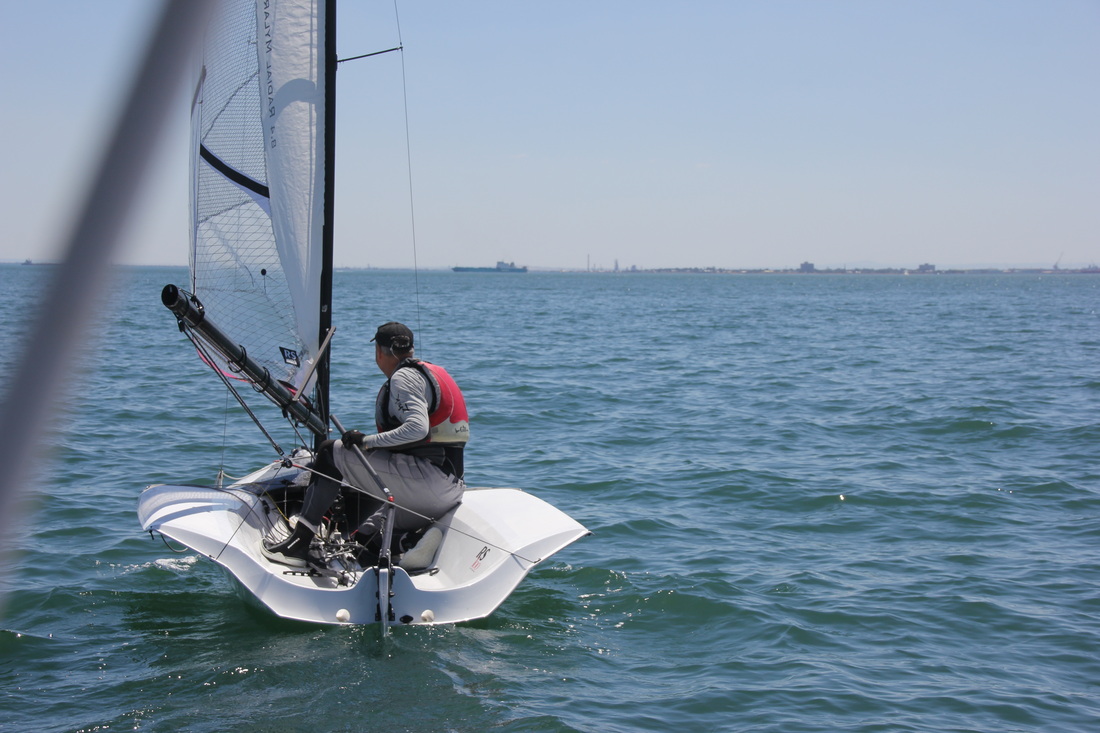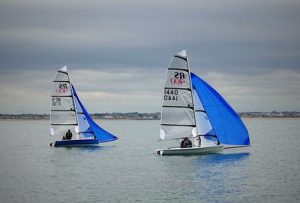

Although light air sailing is far from most sailors’ favourite conditions, it does provide the greatest number of opportunities to make the biggest gains.
A well-sailed boat can develop a great speed advantage, and at times it can go literally twice as fast as its competitors – so it is not unusual to see the largest race-winning leads developed in the lightest of conditions.
Boat preparation can also play a much more significant role in the improvement in position on the race track, things like removing any extraneous weight, cleaning and polishing the bottom.
Another light air must is taking unneeded purchases out of sheeting systems and using the lightest possible sheets to enable sails to set in the smallest puffs of breeze.
UPWIND
Good telltales are essential to enable you to set draught and twist plus an effective masthead wind indicator, wool tufts on the shrouds work well and I have even seen boats that have taped incense sticks to the shrouds, they burn very slowly and provide a smoke trail to show wind direction.
Light Air
In most cases in light air, a flatter sail performs best because it allows the airflow to remain attached to the sail. In the case of the mainsail, a firm outhaul will flatten the lower section of the main whilst allowing the leech to be more open.
Prebend the mast to flatten out the entry to the mainsail, and the Cunningham and vang should be completely slack.
At no time should the leech of the main be angled farther to weather than parallel to the centreline. In drifting conditions, the technique of trimming the upper batten parallel to the boom is dropped. The upper batten is set parallel to the centreline.
Traveller
The traveller is sometimes pulled all the way to weather in super light conditions so that the slightest puff will allow the boom to lift easily, but as the breeze picks up, drop the traveller down again so the boom stays at or below the centreline while you are trimming the upper batten parallel to the boom.
There isn’t anything slower in light air than having backwind at the luff of the main. With the main angled far off the centreline, the slot is in danger of being closed. To avoid this, flatten the mainsail. This lets you ease the mainsheet until the upper batten is parallel to the centreline without backwind.
Light Air
In light conditions, the jib should become increasingly full in its forward sections. If you are sailing a one-design that uses the same jib in 0 to 30 knots of breeze, light air is the condition where the jib should be set up with the greatest amount of luff sag.
A full entry is more powerful, and also helps widen out the “groove”. The boat is less critical to steer, mast prebend also contributes to luff sag.
DOWNWIND
Off the wind, the mainsail doesn’t require as much flow across it. A full shape will make it more forgiving. Ease the outhaul, and mast bend should be eliminated.
On a reach, if the spinnaker is drooping, it is quicker to sail with the jib and douse the kite.
With a symmetrical spinnaker adjust the pole height so that the clews are level and make sure that the sheet is light enough not to weigh the corner down and that the sheet is well eased.

BOAT HANDLING
Crew movements must be slow and weight forward to lift the aft area of the boat to reduce drag. To make the boat head up, heel to leeward slightly, once turned to the heading you want, flatten the boat to its sailing lines.
Rudder movement acts as a brake, so keep it to a minimum and use weight to turn the boat.
Avoid Pinching
Avoid pinching because the boat relies on forward movement to create flow over the foils. Once the flow detaches from the foils, the boat will start to slide sideways, so foot off and get the flow going. As you accelerate,e steer up slightly by moving your weight to leeward.
This is an ongoing procedure. In a lull, move weight to weather to steer down to accelerate and then repeat.
Keep the crew out of the slot and keep the boat flat unless using weight to steer.
If you have good boat speed, standard tactical situations should be approached aggressively in most conditions. Light-air tactics demand more conservatism and greater anticipation.
You can actually gain distance when you dip a starboard tacker because of the speed you generate when bearing off. Don’t be afraid to wave a port tacker across if it looks like they might tack on your lee bow.
If a new wind comes in with more velocity, always sail to it as soon as possible. Even if this requires sailing a headed tack for a short period to get to it. Since maximum boat speed is extremely important, always aim to get in a position to increase speed through the water.
A massive shift would be an exception if the shift were to last a substantial length of time.

